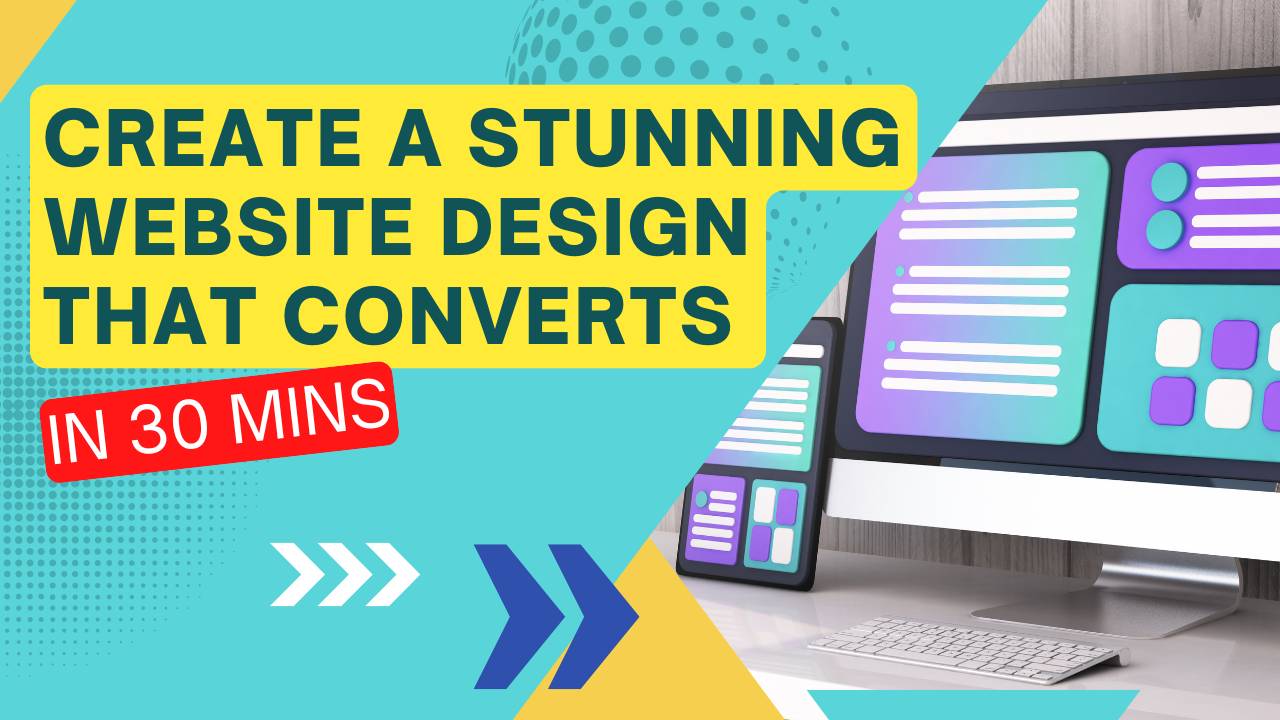 9 months ago
Technology, Web Design
By akhabartime
374 Views
9 months ago
Technology, Web Design
By akhabartime
374 Views
Website Design: A Comprehensive Guide to Creating an Effective and Attractive Website
In the digital age, your website is often the first interaction a potential customer or client has with your business. As such, it needs to make a lasting impression. Website design plays a crucial role in this initial interaction. A well-designed website can enhance user experience, build credibility, and ultimately increase conversions. This article explores what website design is, why it is important, and the key elements that make up a good website design.

What is Website Design?
Website design refers to the process of planning, conceptualizing, and arranging the content and features of a website. This includes everything from layout, color schemes, fonts, images, navigation, and interactivity. The goal of website design is not just to create an aesthetically pleasing site but also to provide an enjoyable user experience and functionality that meets the needs of the visitors.
When you think about website design, it is essential to focus on both the front-end and back-end elements. The front-end includes all the visible elements that users interact with, like the layout and design elements, while the back-end involves coding, database management, and the functionality that powers the website.
Why is Website Design Important?
- First Impressions Matter
Your website is the first touchpoint for many of your potential clients, and you want that first impression to count. A clean, professional, and easy-to-navigate website design tells visitors that you are credible and trustworthy. On the other hand, a poorly designed website with confusing layouts or slow loading times can leave a bad impression and drive potential customers away. - User Experience (UX) and Usability
A good website design ensures a positive user experience. If visitors find your site difficult to navigate, they are less likely to stay and explore further. Intuitive navigation, fast loading times, and mobile-friendly design all contribute to better UX. A seamless experience enhances user engagement and encourages repeat visits. - Search Engine Optimization (SEO)
The design of your website also plays a significant role in SEO. Search engines, like Google, prioritize websites that load quickly, are mobile-friendly, and offer an easy-to-navigate structure. A responsive design that works well on all devices will ensure that your website ranks higher on search engine results, bringing more traffic to your site. - Brand Identity and Trustworthiness
A well-designed website reflects your brand’s identity. The color scheme, fonts, and imagery used on your website should align with your brand’s personality. Consistency in design helps establish trust with your audience and reinforces your brand message. - Increased Conversions and Sales
An effective website design can lead to higher conversions. Whether it’s encouraging users to make a purchase on an e-commerce site, filling out a contact form, or subscribing to a newsletter, a website designed with the user in mind can guide visitors through the conversion process.

Key Elements of Good Website Design
- Responsive Website Design
With the growing number of mobile users, having a responsive website design is essential. A responsive design ensures that your website adapts to different screen sizes, whether it’s a desktop, tablet, or smartphone. This approach enhances the user experience and helps prevent visitors from bouncing due to accessibility issues on mobile devices. - Intuitive Navigation
Website navigation is one of the most important aspects of a website design. Clear and simple navigation ensures that users can easily find the information they are looking for without frustration. Menus should be logically organized, with important pages such as the homepage, about us, contact, and services easily accessible. - Fast Loading Speed
Website speed is crucial for both user experience and SEO. Research shows that users are likely to abandon a website if it takes more than 3 seconds to load. Optimizing images, reducing HTTP requests, and using a reliable web hosting provider are just a few ways to ensure your website loads quickly. - Quality Content and Visuals
Great website design goes hand-in-hand with quality content. Text, images, and videos should be informative, engaging, and visually appealing. It’s essential to strike a balance between aesthetics and content. Good design should complement and enhance the content without overwhelming the user with too many graphics or clutter. - Clear Calls to Action (CTAs)
Effective website design involves guiding visitors toward taking specific actions. Whether it’s making a purchase, contacting you, or signing up for a newsletter, a good design will incorporate clear and visible calls to action. These CTAs should stand out on the page and make it easy for users to know what to do next.

Types of Website Designs
- E-commerce Website Design
For businesses that sell products or services online, an e-commerce website design is essential. This type of website must be user-friendly, secure, and optimized for smooth transactions. Key elements include product pages, a shopping cart, secure payment options, and an easy checkout process. Clear product descriptions, high-quality images, and effective sorting or filtering options are also important. - Portfolio Website Design
A portfolio website design is typically used by creative professionals such as photographers, designers, and artists to showcase their work. The design should emphasize the work itself, with minimal distractions. High-quality visuals, smooth scrolling, and easy navigation are key components of a successful portfolio design. - Agency Website Design
For agencies offering services such as marketing, design, or consulting, a well-crafted agency website design is essential to showcase expertise and attract potential clients. This type of design should focus on displaying the agency’s past work, team members, services, and client testimonials.
Conclusion
Website design is far more than just the visual aspect of your online presence. It is about creating an engaging, user-friendly experience that supports your business goals. Whether you’re focusing on responsive website design, e-commerce platforms, or portfolio websites, the key is to create a design that resonates with your target audience. A good website design will not only captivate visitors but also drive them toward taking desired actions, such as making a purchase or contacting you for more information. Therefore, investing in professional website design is one of the best decisions you can make for your business in today’s digital landscape.

